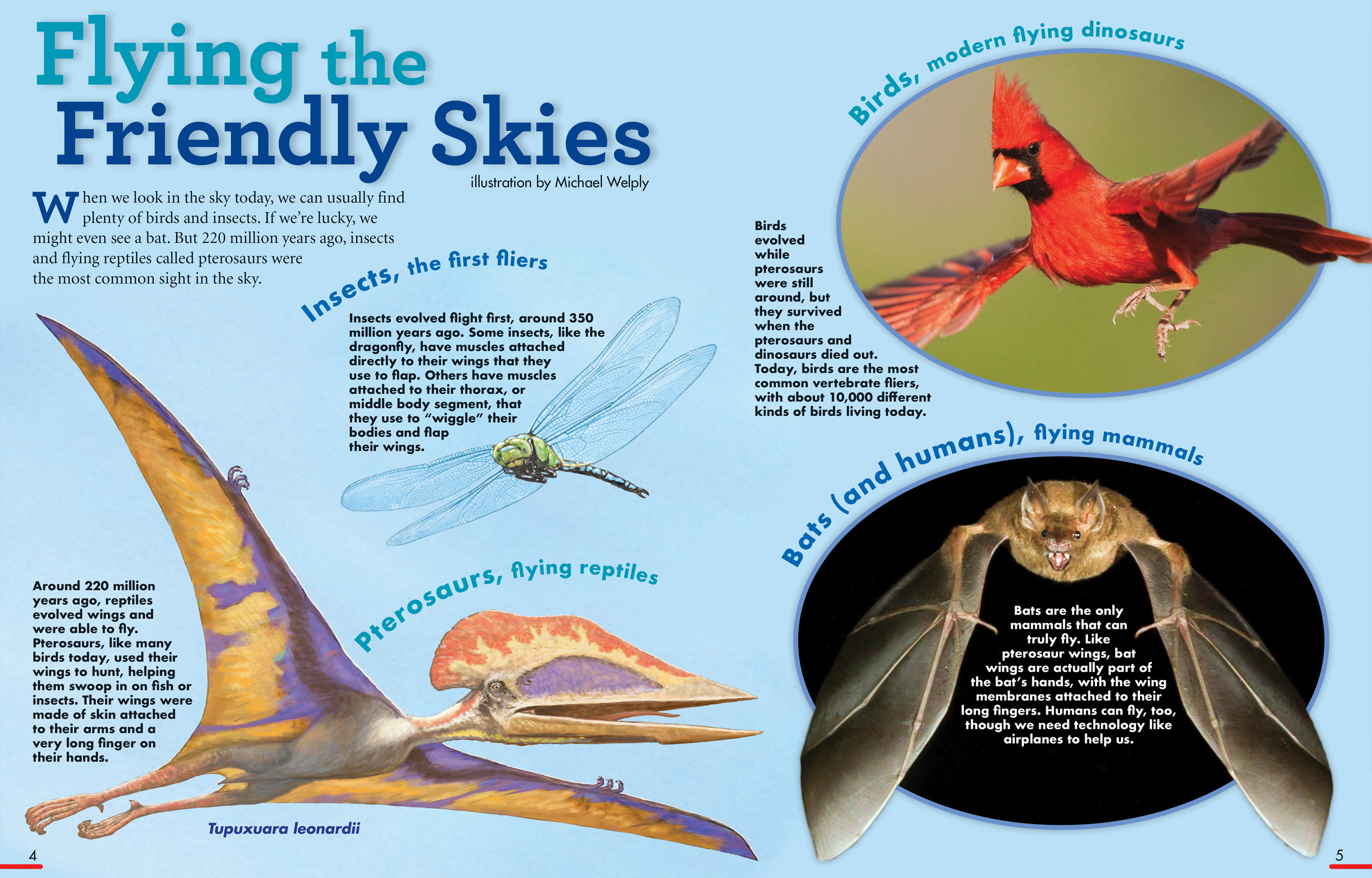
Flying the Friendly Skies
ByWhen we look in the sky today, we can usually find plenty of birds and insects. If we’re lucky, we might even see a bat. But 220 million years ago, insects and flying reptiles called pterosaurs were the most common sight in the sky.
Insects, the first fliers
Insects evolved flight first, around 350 million years ago. Some insects, like the dragonfly, have muscles attached directly to their wings that they use to flap. Others have muscles attached to their thorax, or middle body segment, that they use to “wiggle” their bodies and flap their wings.
Pterosaurs, flying reptiles 
Around 220 million years ago, reptiles evolved wings and were able to fly. Pterosaurs, like many birds today, used their wings to hunt, helping them swoop in on fish or insects. Their wings were made of skin attached to their arms and a very long finger on their hands.
Tupuxuara leonardii
Birds, modern flying dinosaurs
Birds evolved while pterosaurs were still around, but they survived when the pterosaurs and dinosaurs died out. Today, birds are the most common vertebrate fliers, with about 10,000 different kinds of birds living today.
Bats (and humans), flying mammals
Bats are the only mammals that can truly fly. Like pterosaur wings, bat wings are actually part of the bat’s hands, with the wing membranes attached to their long fingers. Humans can fly, too, though we need technology like airplanes to help us.

